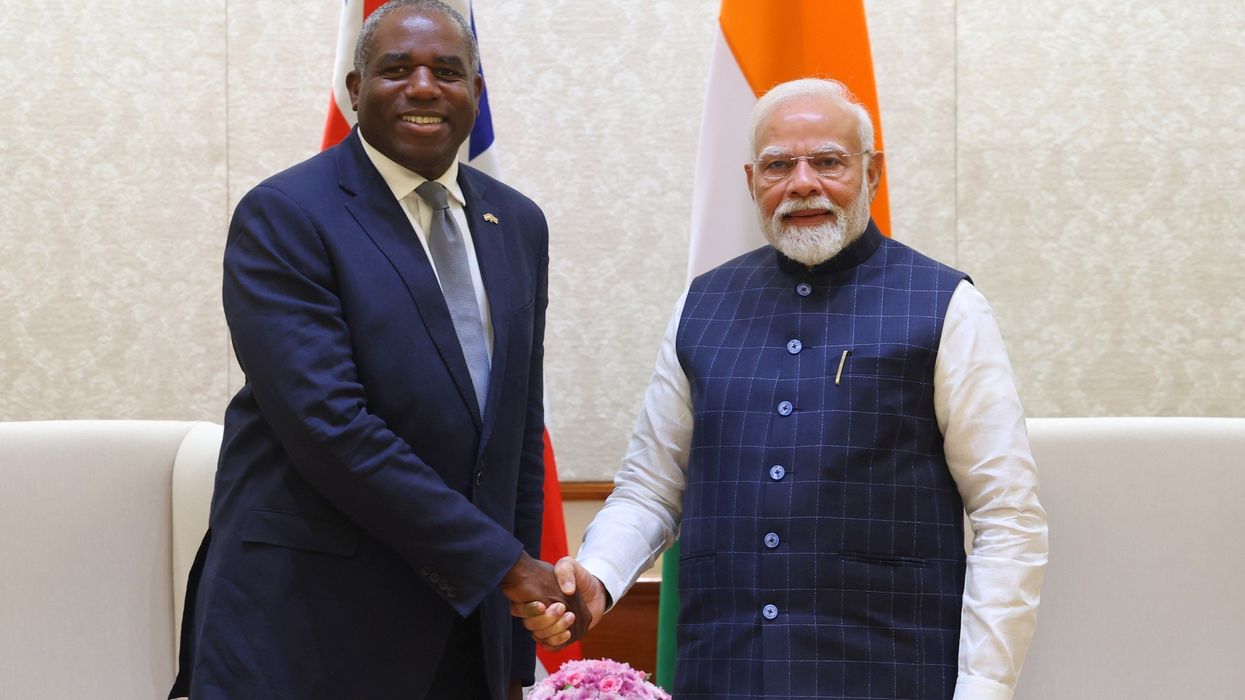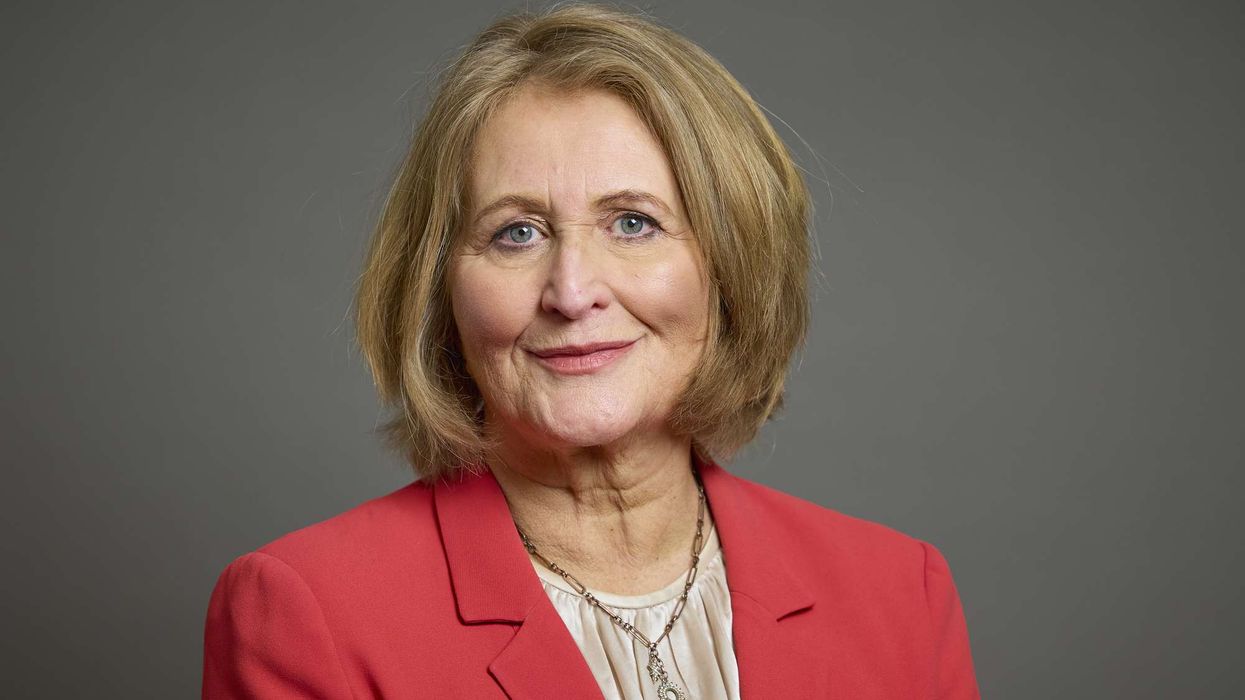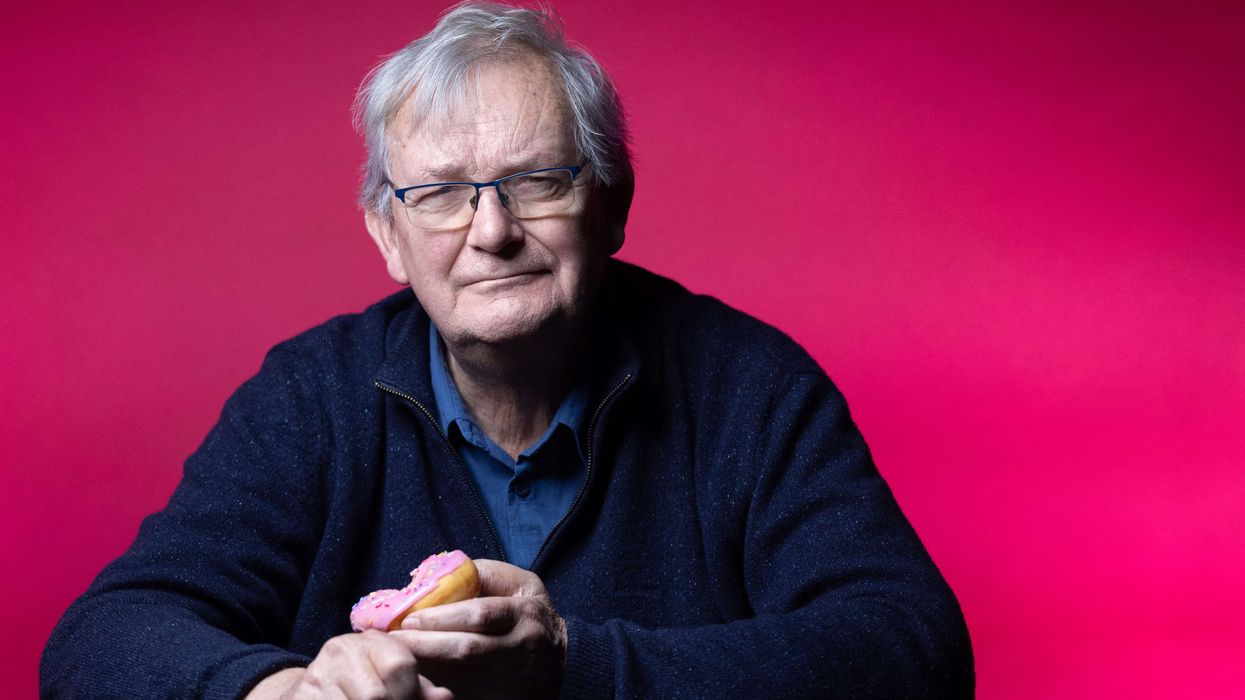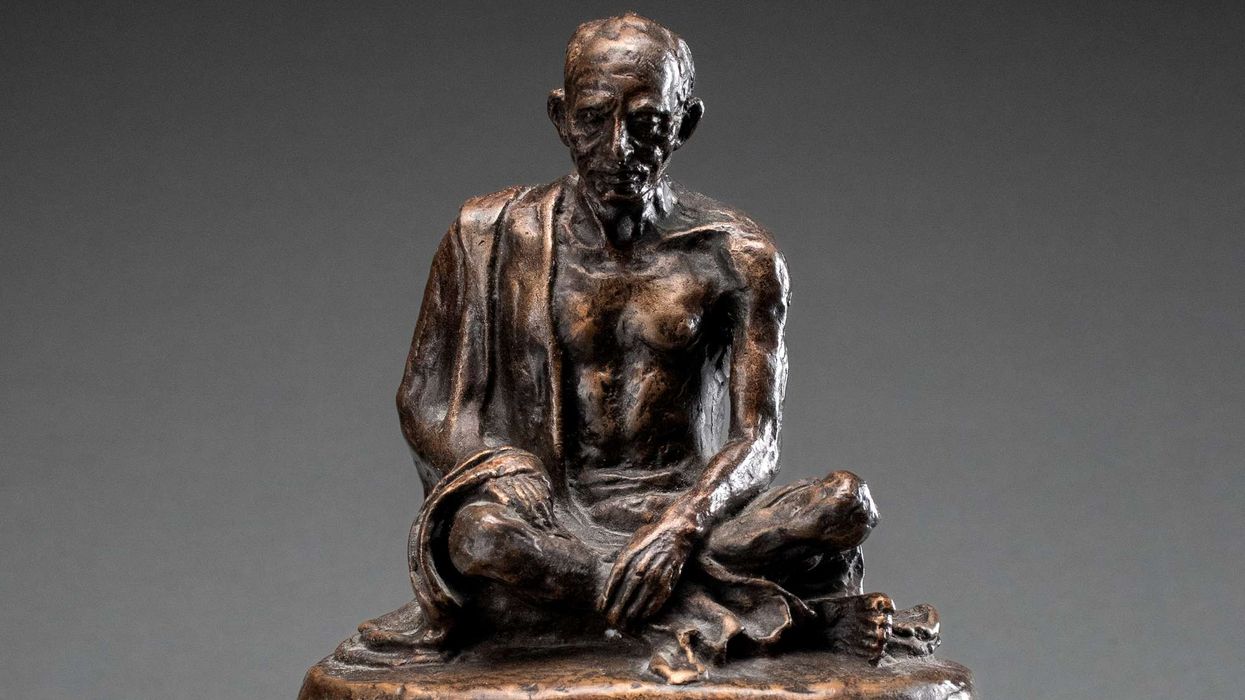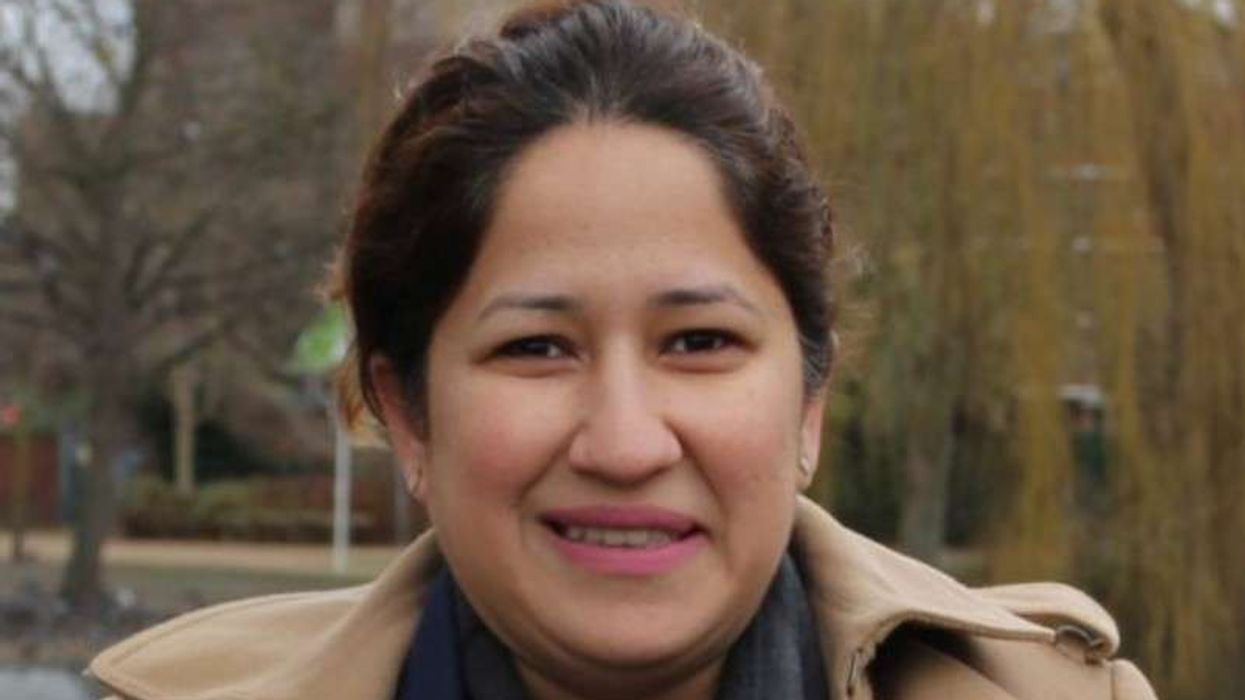IN A wide-ranging interview with Eastern Eye, UK foreign secretary David Lammy has underlined the central role of British Indians and Asian-owned businesses in unlocking the full potential of the UK-India free trade agreement (FTA), expected to boost bilateral trade by £25.5 billion annually and double overall trade by 2030.
The eagerly awaited FTA will be signedbe signed during prime minister Narendra Modi’s UK visit on Thursday (24), marking a significant step forward in bilateral ties. But, as Lammy makes clear, this is not a deal that will be left to run on autopilot.
“We are not just signing this deal and hoping for the best,” he said, stressing that a network of working groups and implementation committees will ensure both sides meet their targets. These bodies will closely monitor progress, address hurdles, and ensure timely action where needed.
British Asians, who own and run thousands of small and medium-sized businesses across the UK, are expected to be among the biggest beneficiaries of the FTA. Lammy described these entrepreneurs as “a driving force in our economy,” and said the agreement includes specific measures to support them—from simplified customs procedures and digital trade facilitation to the creation of a dedicated SME chapter. This includes points of contact, support for certification, and ongoing cooperation.
A landmark inclusion is also India’s first-ever trade and gender equality chapter, aimed at supporting women-owned businesses through trade missions and access to finance and skills.
The foreign secretary was also keen to frame the agreement in the wider context of the UK’s Indo-Pacific strategy, where India is described as a “vital partner” for ensuring peace, security and shared prosperity in the region. The upcoming launch of India-UK Vision 2035 is expected to guide this broader partnership, spanning five key areas: growth, security, technology, climate and education.
With India fast becoming a global leader in technology and innovation, the UK is looking to deepen its ties through joint investments in artificial intelligence, green tech, and future telecoms. Lammy noted that projects under the UK-India Technology and Security Initiative are already bearing fruit, including a £7 million fund for future telecoms research and growing cooperation in semiconductors and quantum tech.
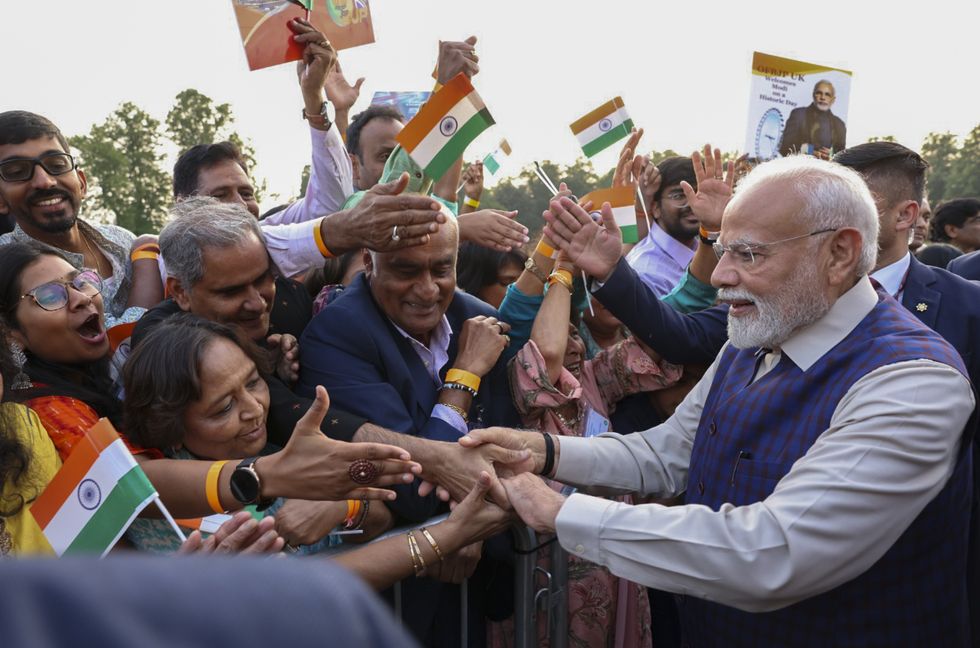
Lammy also addressed concerns around migration, student access, and worker mobility—longstanding issues for communities on both sides. He stressed the importance of managing these flows responsibly, using existing frameworks like the Young Professionals Scheme and the Migration and Mobility Partnership, while maintaining strong people-to-people links that form what he called the “Living Bridge” between the two nations.
The minister also made a direct appeal to British Indians: “You are at the heart of the UK-India relationship,” he said, calling on them to continue leading the way in business, education, culture, and diplomacy.
Full text of the interview:
Q. The FTA is projected to boost bilateral trade by £25.5bn annually and double total trade by 2030. What mechanisms are in place to ensure both sides achieve these ambitious targets, and what are the short-term benchmarks for success?
Lammy: We are not just signing this deal and hoping for the best. To ensure we deliver on the opportunities this deal unlocks, we’ve built in a range of mechanisms across the agreement, such as dedicated working groups and implementation committees. These groups and committees will monitor progress and ensure commitments are fully realised. They will help both sides stay on track and adapt quickly to any challenges.
We will also be working hand-in-hand with UK businesses to help them seize the new opportunities this deal creates. This aligns with the UK’s recent Industrial and Trade Strategies, with the deal supporting the sectors that drive the most growth for the economy. For example, the UK’s large and varied manufacturing sectors will benefit from tariff reductions on aerospace (from 11 per cent to 0 per cent), automotives (over 100 per cent down to 10 per cent under a quota), and electrical machinery (22 per cent down to 0 per cent).
From simplifying customs procedures to improving digital trade infrastructure, we’re focused on making it easier, faster, and more cost-effective to trade with India.
(The ambition to double trade by 2030 was part of the UK-India 2030 Roadmap, not a direct outcome of the FTA)
Q. As you know, the British Asian community own and operate many successful SME businesses in the UK. How will they access new opportunities under the India FTA? What support will the UK Government give these companies to trade with India?
Lammy: British Asian entrepreneurs are a driving force in our economy, and this deal is designed with them—and all SMEs—in mind. India is the world’s most populous country, the fifth-largest economy, and one of the fastest-growing. But it has also been a challenging market to access, especially for smaller businesses. This agreement changes that. We’re breaking down long-standing barriers and opening the door for SMEs to trade more easily and affordably.
We’ve simplified customs processes, promoted digital contracts, and committed to making trade information more accessible and user-friendly. We’re also working to ensure UK assessment bodies can gain recognition in India—so products can be tested and certified here in the UK, saving time and money.
We’ve secured a dedicated SME chapter in the agreement. This sets up contact points, encourages best practice sharing, and creates a framework for ongoing cooperation to support small businesses.
This deal also champions women in business. We’ve secured India’s first-ever chapter on trade and gender equality, establishing a Working Group to promote women’s access to markets, skills, and finance. We’ll also explore initiatives such as trade missions for women entrepreneurs and support for women-owned SMEs.
Q. With global power dynamics shifting, what role does the UK envision for India in its broader Indo-Pacific strategy, and how does that align with mutual security interests in the region?
Lammy: India is central to the UK’s Indo-Pacific strategy. As the world’s most populous democracy, the fastest growing economy in the G20, and a rising global power, India is a vital partner in promoting a free, open, and secure Indo-Pacific. Prime minister Narendra Modi is in the UK this week, and his visit will mark the launch of India-UK Vision 2035—a refresh of our bilateral Comprehensive Strategic Partnership (CSP) that sets out a bold, future-facing agenda. This vision outlines shared goals across five key pillars: Growth, defence and security, technology and innovation, climate and clean energy, and education.
The UK sees India as a trusted partner in tackling shared security challenges—from terrorism and cyber threats to maritime stability. Our defence cooperation is growing significantly under the India-UK Vision 2035. We are doing this through joint capability development, industrial collaboration, and expanding cooperation with our armed forces. Together, we’re working on strategic alignment for peace and stability in the Indo-Pacific and beyond.
Q. India is emerging as a leading tech and innovation hub. How is the UK leveraging this growth within the Vision 2035, particularly in areas like AI, green technology, and digital infrastructure?
Lammy: The UK and India are working together to harness the rapid growth of frontier technologies and drive innovation through India-UK Vision 2035 and the UK-India Technology and Security Initiative (TSI). This collaboration is future-facing—focused on joint research, innovation hubs, and building resilient supply chains in critical areas like AI, future telecoms, semiconductors, and health tech.
We’re already seeing results. Under the TSI—which I launched almost a year ago—we’ve initiated a new Future Telecoms Partnership with up to £7 million in joint R&D funding, and we’re deepening cooperation on critical minerals, semiconductors, and quantum technologies. In AI, we’re promoting safe and responsible governance frameworks, and working together in global forums like the G20 and the UN.
On climate and clean energy, one of the crucial challenges of our time, we’re partnering to scale up green technologies such as off-shore wind farms, mobilise climate finance, and protect forests—supporting both countries’ net zero and nature goals. Given concerns over mobility and visa regimes on both sides, especially for skilled workers and students, how is the UK balancing immigration policy with its strategic ambition to deepen economic and cultural ties with India?
With 1.9 million people of Indian origin in the UK, our "Living Bridge" connects our countries across culture, education, business, food, sport, and more. The UK wants to encourage this continued exchange, while preventing exploitation by organised criminal organisations. Through India-UK Vision 2035, we are supporting managed mobility through existing schemes like the Young Professionals Scheme and the Study India Programme, which benefit young people in both countries.
The agreement includes a renewed commitment to curb irregular migration, prevent exploitation, and safeguard the UK-India Living Bridge, through full implementation of the Migration and Mobility Partnership. We are reinforcing this partnership by ensuring safe, legal migration routes while preventing exploitation and supporting the integrity of the UK-India Living Bridge.
Q. What role would you like the British Indian community to play to strengthen and develop ties between the UK and India?
Lammy: The British Indian community is at the heart of the UK-India relationship. They are a powerful force for UK economic growth and prosperity, and play a key role in deepening understanding and driving collaboration.
India is already the top nationality for UK skilled worker, health and care, sponsored study, and visitor visas—highlighting the scale of people-to-people links. We see the British Indian community playing a vital role in strengthening these ties: as cultural ambassadors, business leaders, innovators, and educators who can help shape the next chapter of our bilateral relationship. Their lived experience and deep connections to both countries make them uniquely positioned to foster trust, unlock opportunities, and champion the shared values that underpin our partnership.
